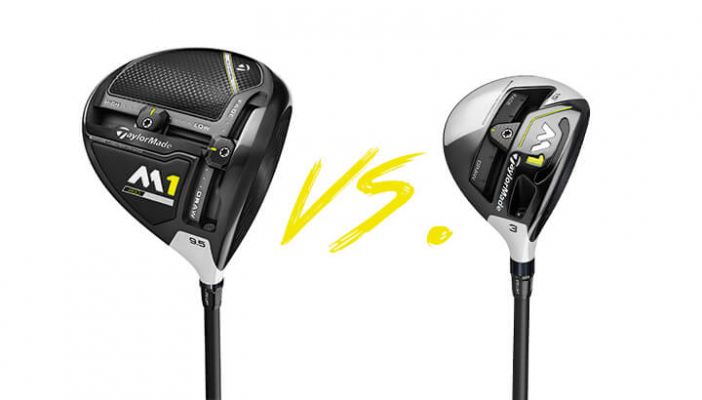It seems like recently everyone is experimenting with leaving their traditional driver in the bag in favor for the multi-functional three-wood. But what’s behind this trend, and should you get on board?
How do you best set yourself up for success at the start of each hole? It’s not cut and dry. But depending on your swing speed and style, experts are saying your classic driver may not be the only option you have off the tee. Newer three-woods are built to be longer, more forgiving and bigger than ever. According to Golf Digest, the “three-wood might be the new driver…Or at least a solid choice as a second driver.” So if you’re not currently hitting your best with a driver, it may be time to put the “Big Bertha” back in your bag, and take a swing with your three-wood.
How do you decide what’s the right choice for you? Here we weigh the pros and cons of teeing off the box with either your classic driver or your newer generation three-wood.
The classic driver
No matter your power or swing speed, pretty much everyone hits farther with a big old number one club. It’s the longest club you have, and is generally the most forgiving (as well as the most expensive, of course). If you’ve got good speed, the driver can generate unparalleled back roll, and when used correctly, will get you your best length. If your driver was made sometime in the last 10 or so years, it also has an internal system that will help tee shots get airborne quickly. When you’re hitting long, super-accurate shots with your driver already, then there really is no reason to try clubbing down to the three. So why is driving with your three-wood the latest fashion for PGA Tour pros and for weekend golfers?
Golf Digest editors decided to run a few tests to see the results different swing speed golfers got from the driver vs. the three-wood and the results were illuminating. They found that those players with a faster swing (over 105 m.p.h.) lost an average of about 27 yards of distance by switching from a regular driver to a three-wood off the tee. This may not be monumental, but it accounts for a noticeable percentage difference. Slower swingers, however (under 95 m.p.h.), “dropped only 14.35 yards.” So if you’re not a lightning fast swinger, you have less to lose by switching to a three-wood.
The three-wood
But why would anyone want to average less distance in their drives? Simple. Where raw distance is lost, loft and accuracy can be gained. For most golfers, the three-wood is a more accurate club than driver off the tee. The “difference makes sense as slower swingers often benefit from added carry from the extra loft while faster swings produce extra spin on a three-wood that robs them of distance,” says contributor E. Michael Johnson.
And if you struggle with accuracy (as do most casual golfers) then having a shorter shaft can really be a boon to your bottom line. So if you are a slower swinger, or have trouble finding the fairway, the shorter club and the greater loft may be worth the minor loss in sheer likely distance for you.
How to make your choice
So what does the choice come down to? We recommend measuring your average distance over several practice shots off a range tee with both your classic driver and your three-wood. Then you can know realistically how much the distance changes for your particular swing speed. Once you know the likely change in distance for you, you can devise an educated strategy for each situation.
If you’re staring down the barrel of a long par five, you may want to go ahead and clock it with your driver. If you’re a slower swinger and you’re looking at a short par three or four, then that extra accuracy is probably worth it. The key here is to know yourself, know your set-up and make an informed decision.
— C. Pedroja
